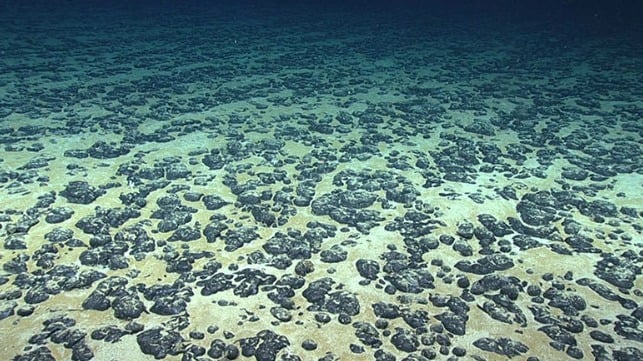What is deep-sea mining?
When people talk about deep-sea mining, they are referring to the process of retrieving metal-rich ores from the seabed at depths of over 200 m, but usually 2-5 km.
There are three main types of deep-sea mining deposits:
- Polymetallic manganese nodules – found on large flat areas of the deep sea floor where metals can slowly precipitate around a nucleus like a shark tooth (4 – 6 km)
- Seabed massive sulfide deposits – formed around hydrothermal vents (1 – 4 km)
- Cobalt-rich crusts – form on areas of elevated bathymetry with no sediment covering (600m – 7 km)
This is not yet happening at a commercial scale, but interest is growing due to the increasing demand for metals such as cobalt and nickel. My research focuses on the polymetallic manganese nodule mining, which is likely to be the first type of deep-sea mining to occur commercially.
Why do people want to mine these nodules?
These potato-sized nodules are rich in cobalt, nickel, copper, rare earth elements (REEs) and other valuable metals. The electric vehicle market is booming, and expected to increase continually over the coming years.
Current electric vehicle battery technologies require heavily on these metals, so demand is only likely to increase.

What are the environmental worries?
How does my research relate to deep-sea mining?
If we want to know how deep-sea mining will affect the oceans and ocean life, we need to understand how the clouds produced at collection sites will change the local environment, and how they spread from the site.
My research uses laboratory experiments to replicate deep-sea mining sites and investigate how fine particles will settle and metals will dissolve. We can use this physical information of cloud behaviour to learn about how environmental stresses will spread under different conditions, to aid ecologists in predicting how deep-sea life will respond.
Very little data has been collected from the mining sites, so these laboratory studies are imperative for characterizing the environmental risks of deep-sea mining.